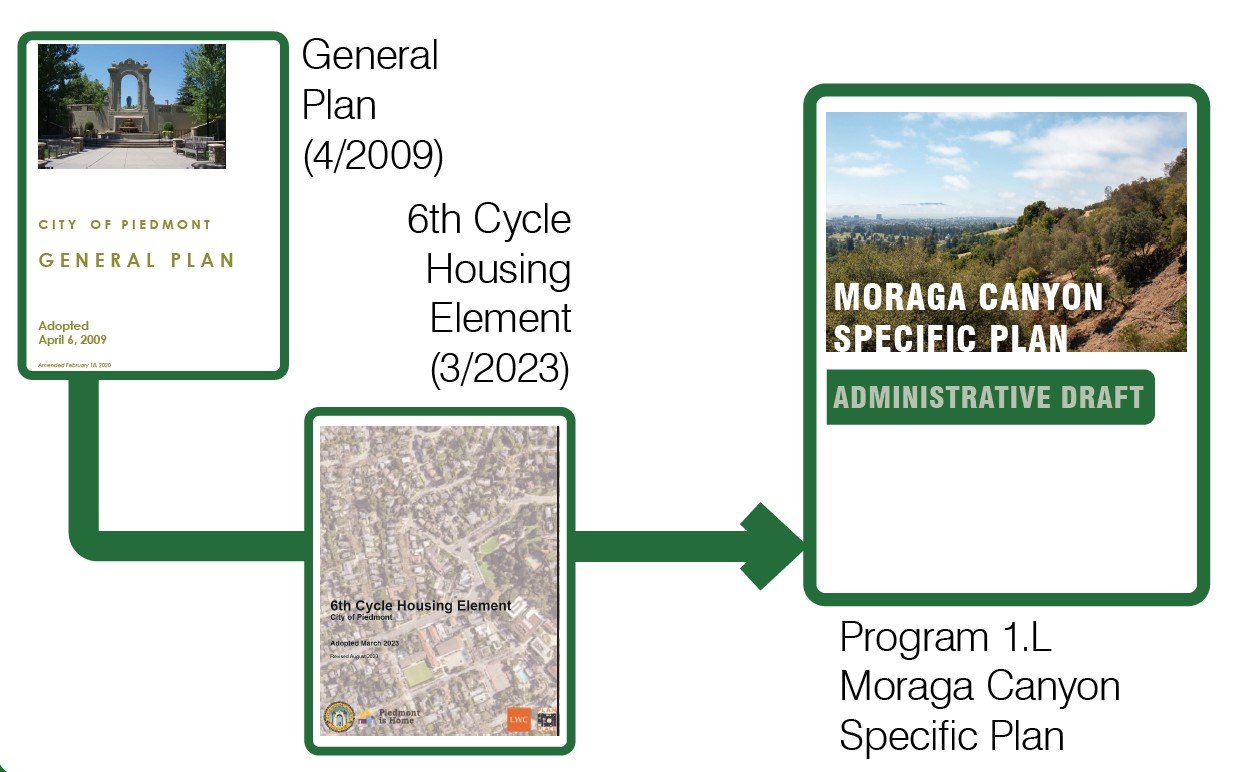About Piedmont Is Home
How we’re planning for housing growth
Planning for future development involves several planning tools that work together to create housing policies and programs:
General Plan
The General Plan serves as a 20-year blueprint for our city. Piedmont’s current General Plan was adopted in 2009.
Chapters of the General Plan are called “elements”. Piedmont’s General Plan has 8 elements, including:
Land Use Element
Transportation Element
Natural Resources and Sustainability Element
Most elements are mandated by the State and have certain timelines associated with them.
Housing Element
The Housing Element is part of the General Plan. It covers the City’s policies for housing construction, housing conservation, and affordability.
State law requires the Housing Element be updated every 8 years. Piedmont’s current Housing Element, which addresses the years 2023-2031, was adopted in March 2023.
Zoning Ordinance
The zoning ordinance is the section of our local municipal code that outlines development rules and regulations. This includes things like:
How tall buildings can be
How many units are allowed on a property
Where certain types of development can be located
Moraga Canyon Specific Plan
A specific plan is an implementation tool for an area. It provides detailed criteria for specific sites to meet the development goals in the General Plan and Housing Element. This includes descriptions, maps, and diagrams that show:
Location of land uses, including open space, within the area
Location of major infrastructure needed to support the land uses in the plan
Development standards and criteria for the area
Implementation and financing measures to facilitate the housing goals
Learn more about what a specific plan is and what it means for Piedmont.
How these tools work together
All of these tools need to be aligned in terms of their goals and objectives. For example: if our Housing Element says we want to encourage denser housing in a certain part of the city, then:
Our zoning ordinance needs to allow for that kind of development to happen, and
If there’s a specific plan, it needs to identify ways to overcome other barriers to that kind of development like infrastructure and financing
Growth mandates
Every city in California needs to plan for a certain amount of housing growth. This is required by the State. If we don’t meet these requirements, we could:
Lose a significant amount of State funding
Be sued by the State, developers, and housing rights organizations
Lose our local permitting authority and local control over land use decisions
The amount of housing growth we need to accommodate is developed through a statewide process called the Regional Housing Needs Allocation. Each year we need to produce and submit an annual progress report showing what we’ve achieved. Our current mandate from the most recent RHNA is for 587 new homes.
The mandate is that by 2031 we need to show that our local zoning rules and plans will accommodate for 587 new homes to be built.
The City is not responsible for building the 587 new homes - generally, this responsibility falls to private developers. The City’s responsibility is to remove regulatory and policy barriers so that private development is possible. We have to show that we are reducing barriers and not preventing this development from occurring in some way.



